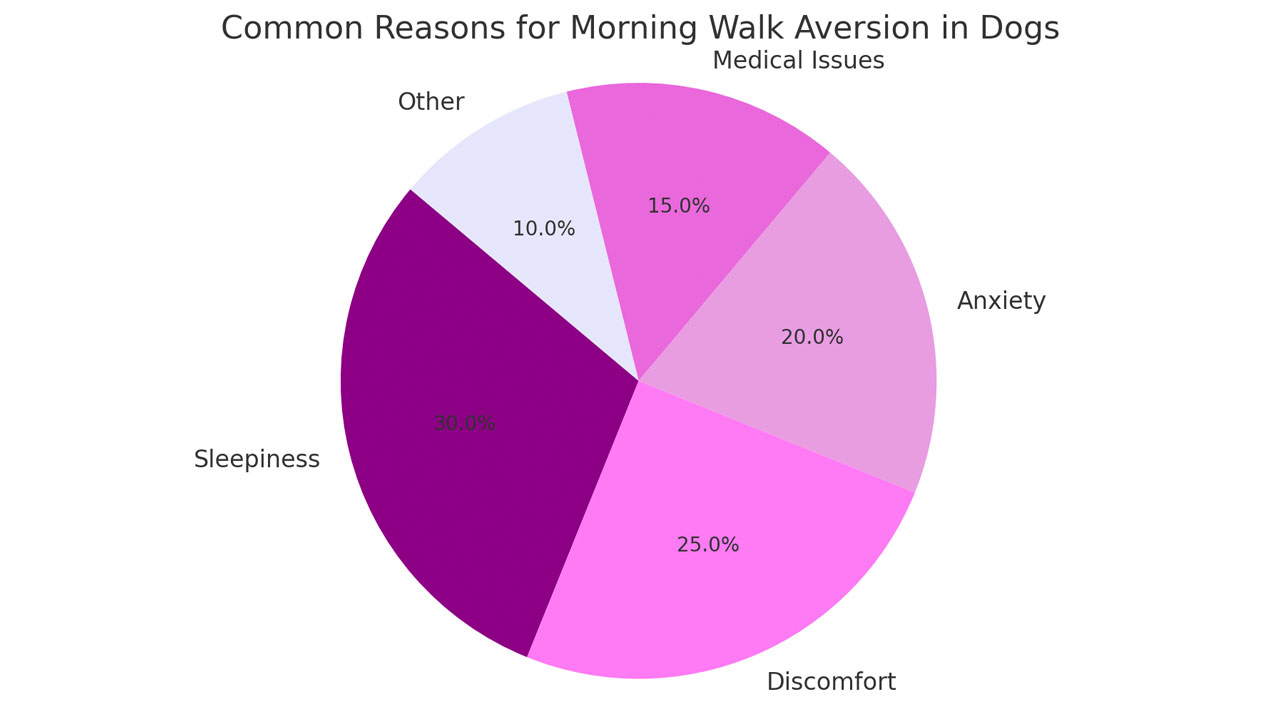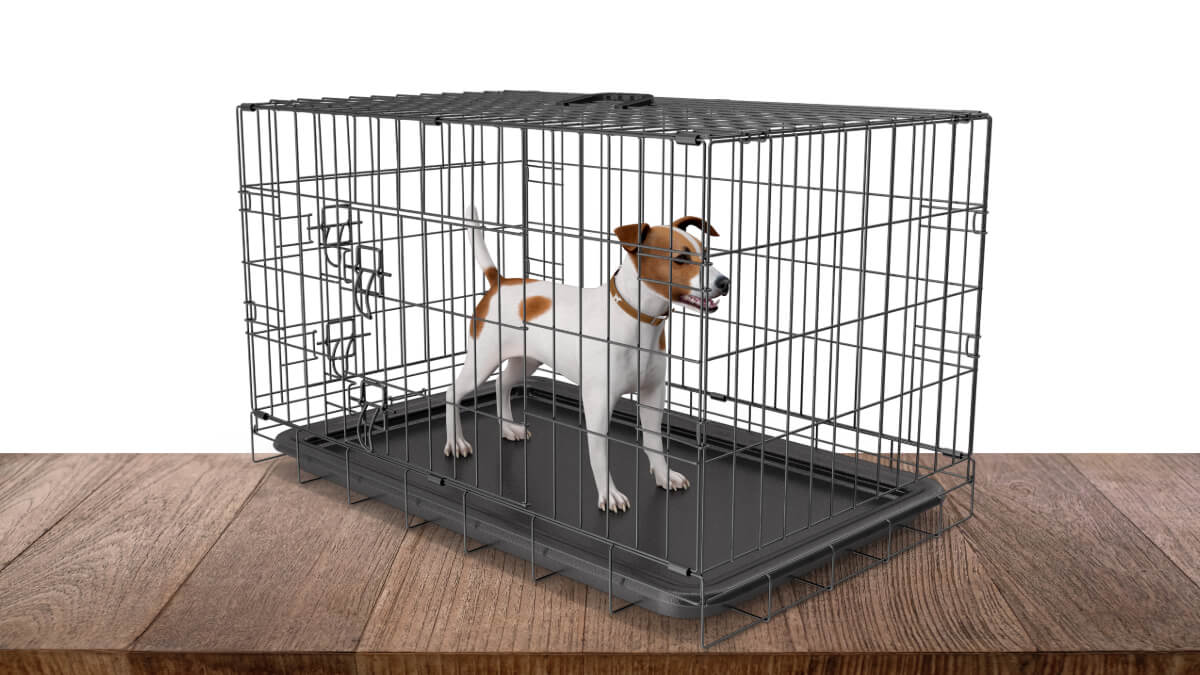Why My Dog Doesn’t Want to Walk in The Morning
Table of Contents
Key Insights about Why Your Dog Doesn’t Want to Walk in the Morning
| Section | Key Takeaways |
| Understanding Why Your Dog Doesn’t Want to Walk in the Morning | Identify reasons like sleepiness, discomfort, anxiety, or medical issues behind the aversion. |
| Establishing a Consistent Routine | A fixed schedule helps dogs anticipate and mentally prepare for walks. |
| Making Walking Enjoyable | Use toys, treats, and games to make walks more appealing. |
| Starting Gradually | Begin with short walks and gradually increase distance as your dog becomes comfortable. |
| Choosing the Right Time | Adjust walk times to when your dog is more energetic and responsive. |
| Varying the Route | Change routes to provide new experiences and mental stimulation. |
| Addressing Underlying Issues | Consult a vet for health or behavioral issues impacting your dog’s willingness to walk. |
| Conclusion | Patience and observation are key to finding the best approach for your dog’s morning walk enjoyment. |
This table summarizes the article’s key points, as a quick reference to understand and implement strategies if your dog doesn’t want to walk in the morning.
Understanding the Reasons Why Your Dog Doesn’t Want to Walk in the Morning
When our furry friends resist morning walks, it can be puzzling and sometimes frustrating. Unraveling the mystery behind this behavior is crucial for a harmonious pet-owner relationship. Let’s dive into the common reasons why your dog might be less enthusiastic about morning strolls.
Sleepiness
Just like humans, dogs have their own sleep-wake cycles. Some dogs simply might not be morning creatures. They may prefer lounging in their cozy beds rather than heading out for an early walk. This is especially true for puppies and older dogs, who generally need more sleep.
Discomfort Due to Weather or Gear
It’s important to consider the environment if your dog doesn’t want to walk in the morning: is it too cold, too hot, or too wet? Dogs can be sensitive to extreme weather conditions. Also, check their gear. An uncomfortable harness or collar can make walks a less pleasant experience.
Anxiety or Fear
Anxiety or fear could be a big reason why your dog doesn’t want to walk in the morning. Morning walks might be scary for some dogs. They could be anxious about noises, traffic, or even meeting strangers. This could stem from a lack of socialization or previous negative experiences.
Medical Issues
Health problems can make walks painful or tiring. Joint issues, such as arthritis, are common in older dogs. If your dog suddenly changes its walking habits, it’s wise to consult a veterinarian.
Common reasons for why your dog doesn’t want to walk in the morning
| Reason | Description | Signs to Look For |
| Sleepiness | Preference for staying in bed longer | Reluctance to get up |
| Discomfort | Weather or gear-related discomfort | Shivering, pulling away |
| Anxiety/Fear | Fear of noises, strangers, or environments | Hesitation, whining |
| Medical Issues | Pain or discomfort due to health issues | Limping, lethargy |
Common Reasons for why your dog doesn’t want to walk in the morning

Strategies to Encourage Morning Walks
Turning your dog from not wanting morning walks into being excited can happen with patience and clever tricks. Here are simple ways to make your dog excited for their morning walk:
Establish a Consistent Routine
Dogs thrive on routine. Setting a regular schedule for walks helps your dog anticipate and mentally prepare for them. Try to walk at the same time each day. This consistency can gradually shift their mindset from reluctance to readiness.
Make Walking Enjoyable
Turning walks into a fun activity is the best trick to use if your dog doesn’t want to walk in the morning. Bring along their favorite toy, or turn the walk into a game. You can also use treats for positive reinforcement. Celebrating small achievements during the walk can greatly increase their eagerness.
Start Gradually
If your dog is particularly resistant, start with very short walks. Gradually increase the time and distance as they become more comfortable. This slow and steady approach helps build their confidence and stamina.
Choose the Right Time
Not all dogs are morning dogs. If possible, if your dog doesn’t want to walk in the morning adjust the walking schedule to a time when your dog is more energetic and responsive. This could be slightly later in the morning or even in the afternoon.
Vary the Route
Dogs love exploring new scents and sights. Changing the walking route can keep them curious and excited. A new environment can offer a multitude of new experiences and stimulations for your dog.
Address Underlying Issues
If discomfort or anxiety is a concern, it’s essential to address these issues. Consulting a veterinarian can help identify any health-related problems. For anxiety, gradual exposure to the source of fear in a controlled manner can be beneficial.
Simple Steps to Encourage Morning Walks
If your dog doesn’t want to walk in the morning, follow these simple steps to motivate them, and make the experience fun:
- Consistent Schedule: Stick to a fixed time for walks.
- Fun Elements: Use toys and treats to make walks exciting.
- Gradual Progression: Start with short distances.
- Adjust Timing: Find the best time for your dog’s energy levels.
- New Routes: Explore different paths for mental stimulation.
- Health Check: Rule out any medical issues affecting their walk.
For anyone struggling with reactivity and excessive barking, these are a good place to start:https://braintraining4dogs.com. Having a reactive dog can be a lonely experience that affects your entire life. Knowing there are people out there who understand and empathize makes it easier.
To learn more about making walks enjoyable, explore our guide on training dogs to ignore distractions, providing practical tips for a focused and pleasant walking experience.
| Key Point | Strategy | Impact |
| Understanding Reluctance | Identify the root cause of walk aversion | Tailors approach to dog’s needs |
| Consistent Routine | Maintain a fixed time for walks | Builds anticipation and habit |
| Adding Enjoyment | Use treats and play to make walks appealing | Increases dog’s willingness |
| Gradual Introduction | Start with short walks and increase gradually | Builds confidence and endurance |
| Timing Adjustments | Walk when the dog is more energetic | Aligns with dog’s natural rhythm |
| Route Variation | Change walking paths for new experiences | Provides mental stimulation |
| Health and Behavior Check | Consult a vet for health issues, anxiety relief | Ensures well-being and comfort |
Strategies to encourage morning walks to solve the problem of your dog doesn’t want to walk in the morning.
Conclusion: A Paw-sitive Step Forward
As we’ve explored in this article, why a dog doesn’t want to walk in the morning and this for different reasons, like sleepiness, discomfort, anxiety, or even medical issues. But keep in mind that every challenge is an opportunity to strengthen the bond with your furry friend. With patience, understanding, and a few clever strategies, you can transform those reluctant paws into eager ones, ready to explore the world each morning.
Start by figuring out why your dog might be hesitating. Is it the cold weather? Or maybe they’re just not a morning dog? Once you know the cause, you can tailor your approach, whether it’s making the walks more fun, trying a different route, or slowly easing into a routine. And sometimes, all it takes is a bit of extra love and encouragement.
So, don’t lose hope if your dog seems more interested in their bed than the leash. With your loving guidance, they’ll soon find the joy in morning walks. Remember, each step you take together is a step towards a happier, healthier life for both of you.
Happy walking!







